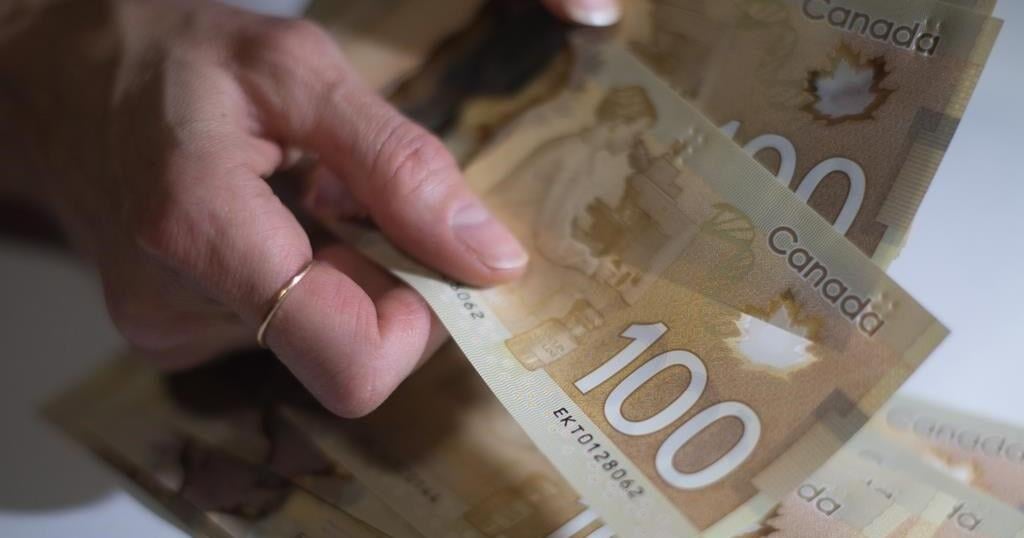You’re a few weeks into your new job and payday has arrived.
But reading your first paystub, it’s a little unclear what all of these deductions mean.
After all, the exact amount of your biweekly direct deposit never came up in the interview process.
Financial planning experts say understanding how deductions are calculated on a paycheque is vital for employees budgeting their money, especially those just entering the workforce or new to Canada.
Employers are responsible for collecting certain mandatory deductions from an employee’s total earnings and sending those to the Canada Revenue Agency. Employees are credited for having paid those amounts when filing their annual tax returns.
Gaetano Gagliardi, government relations and policy lead for the National Payroll Institute, said a common misconception is that people expect their “take-home pay to be closer to their gross pay.”
Gross pay refers to total earnings for a pay period not including deductions, such as income taxes or pension plan contributions. Take-home pay, or net pay, is the amount of money the employee actually receives.
“Unfortunately, a lot of people just think about what’s being deposited into their bank accounts and don’t really look at everything that goes into that calculation — so not only your gross earnings, but all of those deductions that bring it down to your net pay,” said Gagliardi.
“It’s a known fact that a majority of Canadians don’t even read their pay statements. So if you’re not looking at your pay statement, then you don’t have that ability to plan, to budget properly.”
A survey commissioned by H&R Block earlier this year found more than one-in-three Canadians say they don’t know how to check how much tax they should be paying on each paycheque.
In addition, 35 per cent indicated they don’t feel confident they would notice if their paycheque had an error in the tax deduction amount.
“There are more than 400 credits and deductions, so there’s a lot of elements to look for,” said Yannick Lemay, a senior tax expert at H&R Block.
“Always take a look at your paystub because a lot of people don’t even go online to get them or to look at them.”
Employees should expect multiple statutory deductions in each paycheque, starting with federal and provincial income taxes.
Statutory deductions also include Canada Pension Plan or Quebec Pension Plan contributions, as well as employment insurance premiums.
“Those make up the bulk of deductions from your pay, with income tax generally being the biggest chunk coming off your gross pay,” said Gagliardi.
Lemay added that any deductions appearing on a stub are also listed on a T4 document, making it easy for employees to claim those amounts on their annual tax returns.
Other possible deductions fall into three categories, said Gagliardi.
Union requirements, if applicable, mean a portion of wages go toward union dues.
Organization-specific policies might mean there are regular contributions toward a charity, a registered retirement savings plan, or a social committee.
Lastly, there can be legal requirements, such as paying outstanding tax debts, family support payments or wage garnishments.
Ann-Marie Cary, director of global payroll and time solutions for Scotiabank, said other common paycheque misconceptions include employees believing some statutory payments, such CPP or EI contributions, are optional.
“These are mandatory statutory deductions for which every employer has a responsibility to deduct from the employee and remit,” Cary said in an email, adding employers must also contribute an additional percentage on behalf of each employee.
She noted that employees who work remotely without a requirement to report to a physical office will have taxes calculated and deducted from their pay based on the province in which the payroll is processed, rather than where they reside.
Gagliardi said it’s imperative for employees to review their pay statements and become familiar with where their hard-earned money is going.
Doing so not only paints a more accurate picture of their true take-home pay, but can also prevent an employer’s error from going unnoticed.
“Just having a basic knowledge of the deductions that go into your pay will help you understand or foresee what your net pay will be going forward,” he said.
This report by The Canadian Press was first published Aug. 29, 2024.
